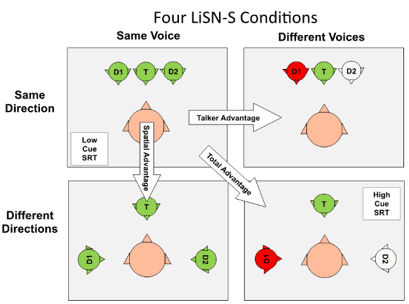Autism Spectrum Disorder and Auditory Processing Disorder in Children (ASD) Study
 Autism is characterized by difficulties with social skills, repetitive behaviors, speech and nonverbal communication. It affects about 1 in 50 or 2% of children in the United States. Although understanding autism is progressing rapidly, it is unclear what role hearing and listening plays in the disorder. Hearing problems have often been reported, but have rarely been tested carefully. We are studying the function of the ear and the brain in children with high functioning ASD; these are children with more mild forms of autism spectrum disorder (ASD). We use the same sensitized measures of hearing function and MRI as we are using in our studies of childhood listening difficulties, described in the SICLiD study. The MRI research will identify connectivity patterns between speech and other brain cortical regions. Together, these approaches will pinpoint mechanisms of listening abilities and disabilities in children with ASD, enabling translation into evidence-based clinical tests and targeted treatments.
Autism is characterized by difficulties with social skills, repetitive behaviors, speech and nonverbal communication. It affects about 1 in 50 or 2% of children in the United States. Although understanding autism is progressing rapidly, it is unclear what role hearing and listening plays in the disorder. Hearing problems have often been reported, but have rarely been tested carefully. We are studying the function of the ear and the brain in children with high functioning ASD; these are children with more mild forms of autism spectrum disorder (ASD). We use the same sensitized measures of hearing function and MRI as we are using in our studies of childhood listening difficulties, described in the SICLiD study. The MRI research will identify connectivity patterns between speech and other brain cortical regions. Together, these approaches will pinpoint mechanisms of listening abilities and disabilities in children with ASD, enabling translation into evidence-based clinical tests and targeted treatments.
A listening test called ‘Listening in Spatialized Noise – Sentences’ (LiSN-S) was developed by Sharon Cameron and Harvey Dillon in Australia. It tests the ability to listen to a talker (T) speak sentences in the presence of two competing distractor voices (D1, D2). As shown above, the distractors can be in the same or different positions, and have the same or a different voice. The LiSN-S thus varies the task difficulty in a realistic way, challenging all listeners in our studies.
Collaborators and Funding
Collaborators: Ernest Pedapati, MD (Cincinnati Children's Division of Child Psychiatry)
Funding: Autism Speaks, CCH Research Foundation



